I drove an electric car from Sydney to Melbourne. This is what I learned about using EVs in a country as large and unforgiving as Australia – and what you need to know before buying one
Electric vehicles are being hailed as the future of everyday travel for Australians.
But I recently took a trip from Sydney to Melbourne (and back) in one go and I can confirm that the dream of a cheap and comfortable EV is far from reality.
Not only did it cost me more in electricity each way than in gasoline, but it also took 25 percent longer to reach my destination because I had to keep stopping to charge.
The car itself, an $87,000 2023 Hyundai Ioniq 5 with less than 4,000 miles on the odometer, was certainly impressive.
It went from zero to 60 mph with little effort and ran so quietly that I could hear my five-year-old and his puppy napping as we floated down the highway.
It was comfortable and had a fresh interior that made it look like a much more expensive ride.
I took this all-electric Hyundai Ioniq 5 on a road trip from Sydney to Melbourne
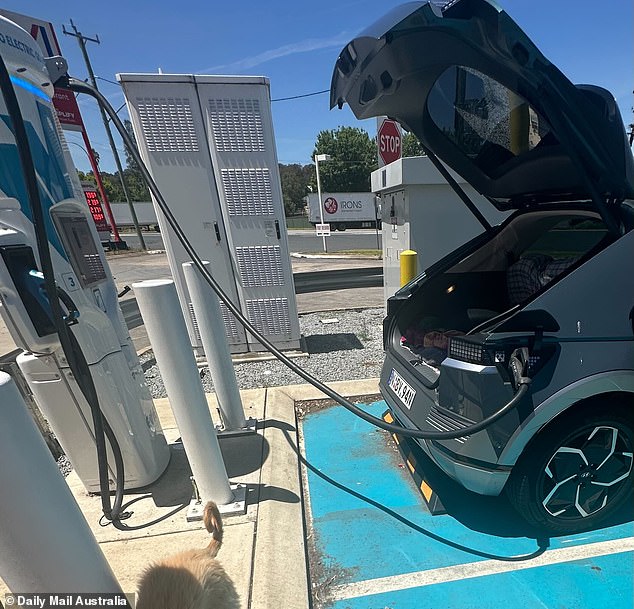
Between Sydney and Melbourne I had to stop three times to charge the car, and I spent $210 on electricity during the trip
The futuristic-looking mid-size sedan has a mileage of 500km per charge, but I quickly discovered that this was the ‘best-case scenario’ and the most I got was 330km, by which time the dashboard of the car on to let me know that I am rapidly approaching powerlessness.
It didn’t take long for the problems associated with taking an electric car on a long-distance trip to surface.
In fact it only took 134km: the distance from my house in Sydney’s east to the Sutton Forest rest area, where we parked for 30 minutes to charge the battery.
I chose to plan my trip before leaving home after realizing that there are few 350kW ‘fast’ chargers in Australia.
And each company requires you to download the app and sign in with banking information or Apple Pay before you can connect.
I was overconfident as I reversed into the first charger in the car park behind the petrol station in Sutton Forest.
It took me over 10 minutes to connect to the charger because Vodafone has no reception in the area. I couldn’t access the charger app to get the ball rolling.
I ended up hopping on the nearby McDonald’s Wi-Fi while a friendly stranger connected the car to my signal, leaving me wondering why regional chargers don’t have a hotspot.
The first charge cost $19.71 and took 29 minutes.
I thought this was pretty competitive until I saw the battery drain as we drove south along the Hume Highway – a road that arguably offers some of the best driving conditions in the country.
We had to stop again at a truck stop in Tarcutta – the famous ‘halfway point’ between the two cities – just under three hours, or 290km, from Sutton Forest.
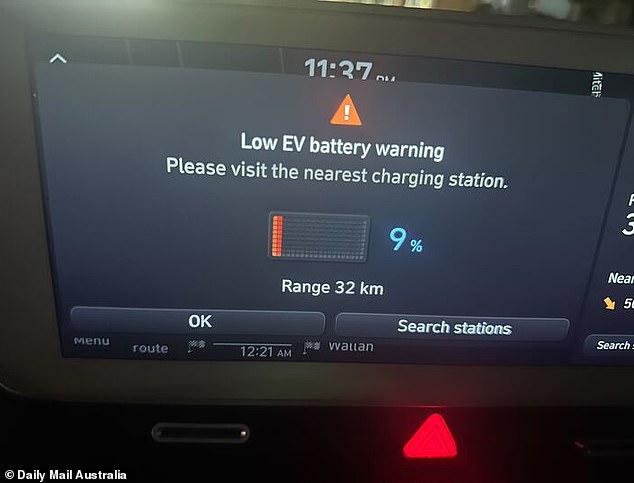
The car’s dashboard started flashing when my battery percentage dropped below 10 percent
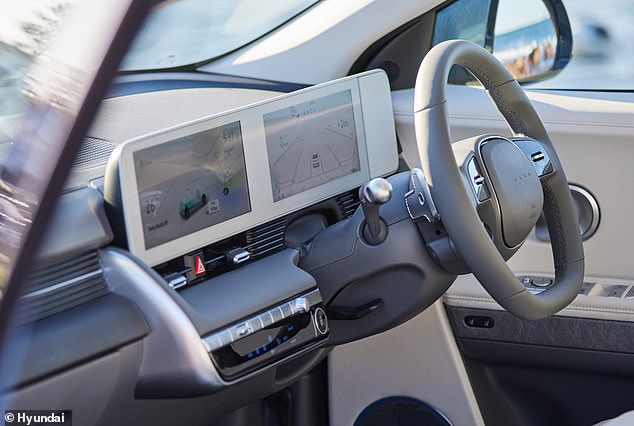
The interior of the car is very luxurious and the electronic displays are easy to navigate
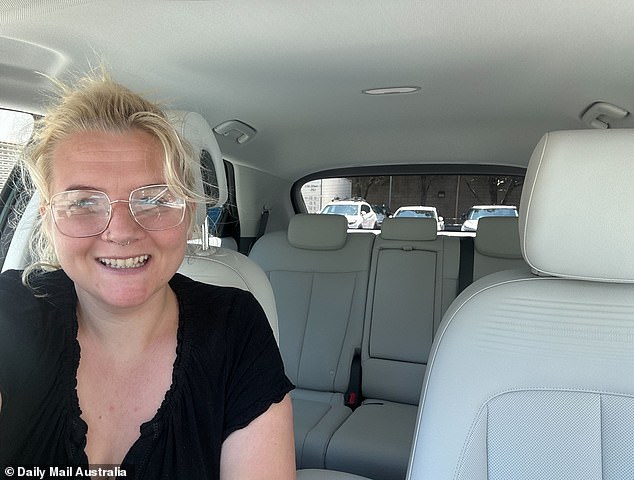
The car felt more luxurious inside than its $87,000 price tag suggests
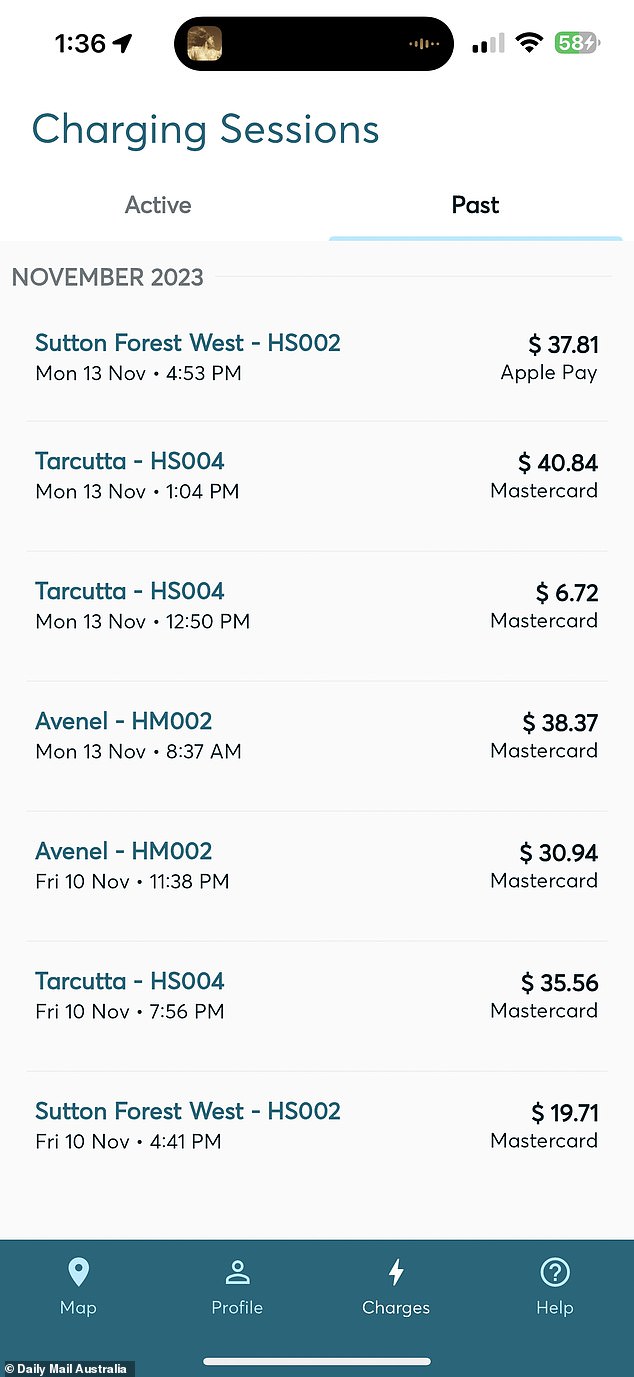
The charging apps track each charge and can be clicked on for more information
According to the car’s dashboard information, the car still had 100 km to go, but that would not be enough to get to the next fast charger.
We spent 35 minutes getting it started and spent $35.56.
The next stop was in Avenel, Victoria, just north of Seymour – and the warning lights went out.
We had traveled 330km, but the car’s display showed there was only nine percent charge left – or an estimated 32km.
It was now 11.38pm and I was keen to reach my final destination, in the northern districts of Melbourne, so we didn’t fully charge the battery.
At 14 minutes and 26 seconds I was ready to unplug my ride. It felt unsafe being hooked up to a dark gas station at that time of night.
My gut feeling was confirmed when three guys in a broken down Commodore drove past bases without plates and threw empty bottles onto the street.
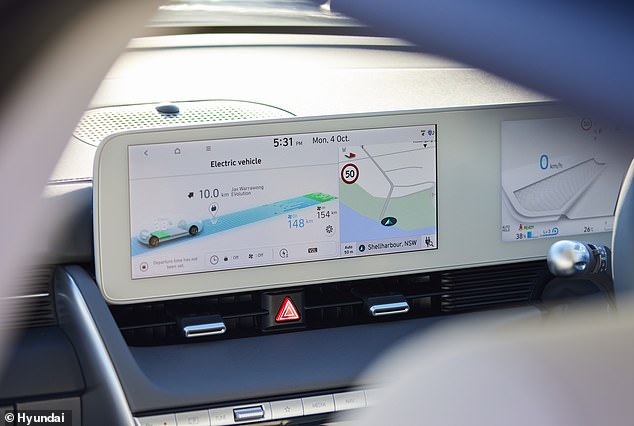
The dynamic display explains how much power you have left – and changes in real time depending on things like fan usage
The cost cost me $30.94 and gave me enough energy to reach my destination – and then back to the same stop to get the full charge on my return trip.
The car came to me with a full battery – and was running at 90 percent when I left for Melbourne – and cost just over $85 to charge during the 819km journey.
The return trip cost $120 because I had to restart in Avenel – this time I stopped for a full 42 minutes.
The cost cost me $38.37, which seemed cheap considering I only got half the cost for $30.94 a few nights earlier.
I stopped again in Tarcutta and spent a whopping $47 and over an hour of my time.
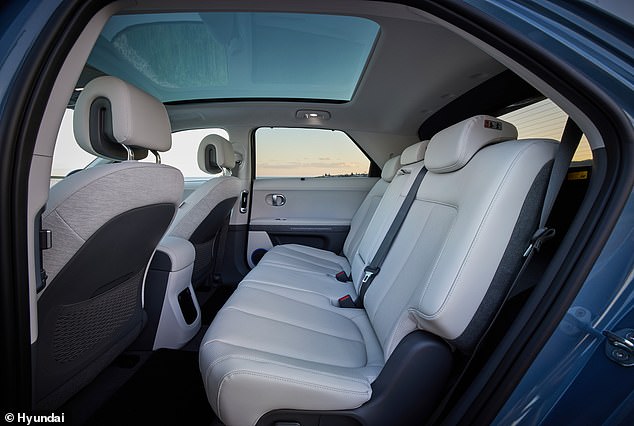
The rear seat is roomy and can accommodate three booster seats, although we only used one. The anchors are ‘hidden’ behind the seats
The slight delay came after someone apparently walked by and turned off the chargers just six minutes later.
The app lets you know when you are actively charging; I was keeping an eye on that when I realized the supply had stopped.
I was shocked that the charger could have been turned off by someone walking past – if I hadn’t looked and didn’t come back until 30 minutes later I would have been smoking.
Sutton Forest was the last stop; we were there 26 minutes and spent $37.81. This time I had a second device that I could disable via hotspot to solve the reception problem.
The trip showed me that the ‘long range anxiety’ surrounding electric vehicles in Australia is completely justified.
If you have to stop for 40 minutes every three hours, road trips will only get longer.
While I haven’t had any problems with faulty chargers, it can also spell disaster if one breaks on your route, as ‘the next option’ is usually a bit too far away.
Fast chargers are rated at 350 kW, while regular chargers use 50 kW – so it would delay a road trip or force an impromptu overnight stay.
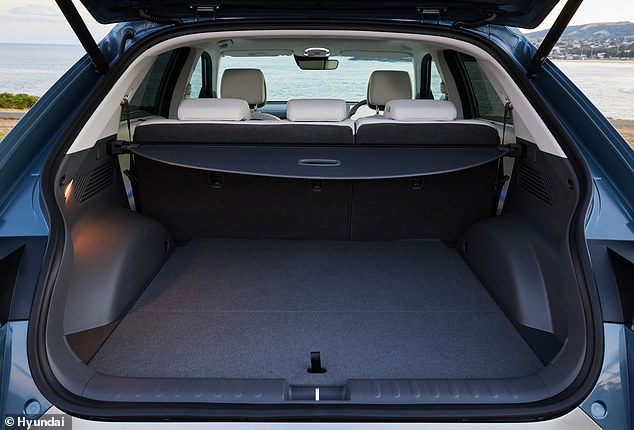
The trunk is extra large, making it the perfect size for pets, busy parents and weekend getaways
I drive on the highway at least once a month, so I would only come up with the idea of buying an electric car a long-distance friendly car is released with a battery range of 1,000 km (knowing that this will be reduced by the use of air conditioning) and infrastructure improves.
However, the Ioniq 5 is a wonderful car to drive.
And for the thousands of Australians who don’t leave the city or prefer to stay between the neighboring metro areas of Sydney, Newcastle and Wollongong, the city has a battery big enough to get from door to door without any hassle.
A nice addition are the car’s maps, which include information about the nearest chargers, whether they are slow or fast chargers, the company that operates them and which chargers are available on your chosen route.
It will also sound a warning if you ask it to navigate somewhere and don’t have enough power to get there.
The same trip would normally cost me $140 in gas – in my 2011 Toyota Corolla – or just a ten-minute fuel stop at $70 each way.
Connecting the car to solar power or taking advantage of subsidies available to new EV owners and NRMA customers would reduce operating costs on road trips like mine.
Using slow chargers is also cheaper; However, they typically require the car to remain parked for most of the day or night.
